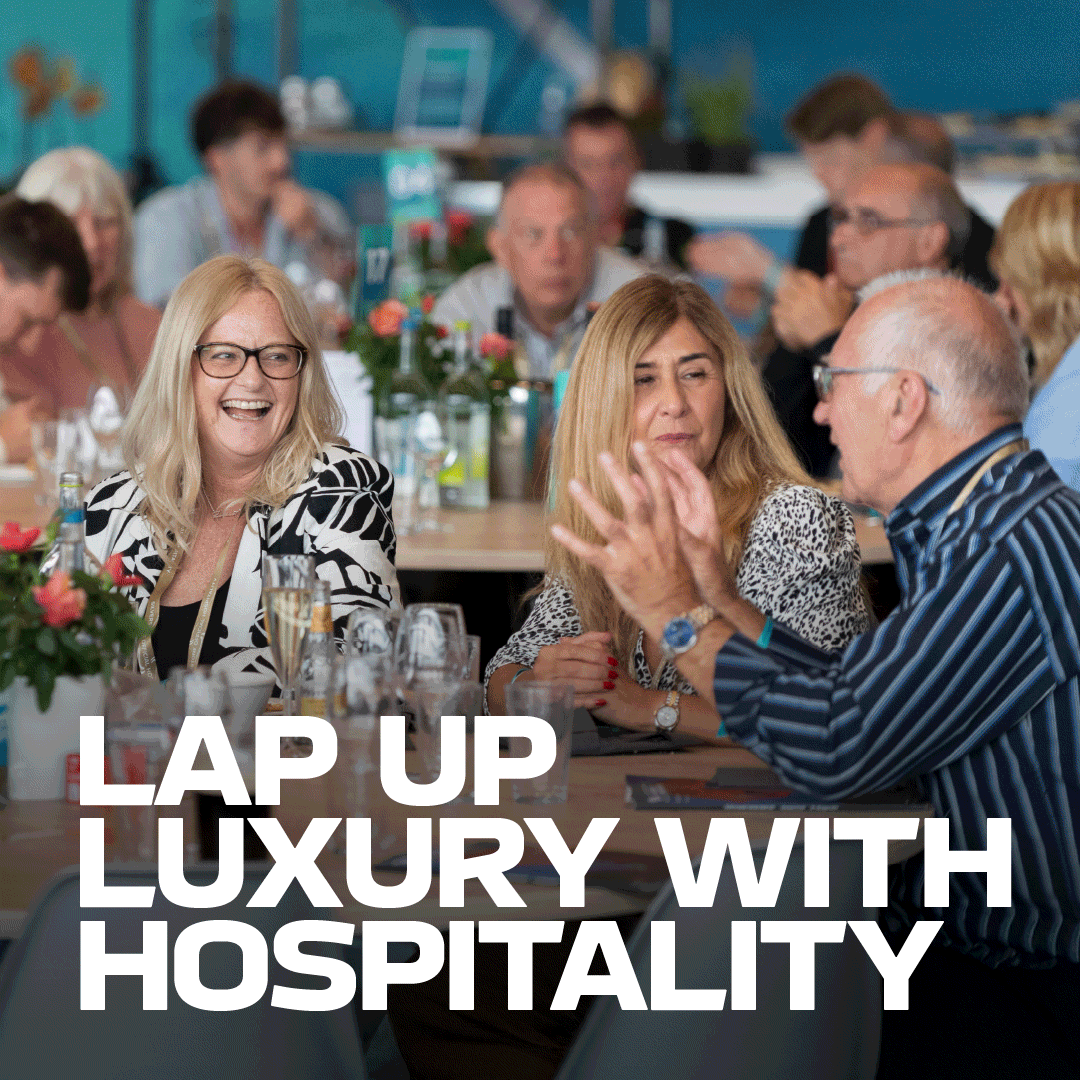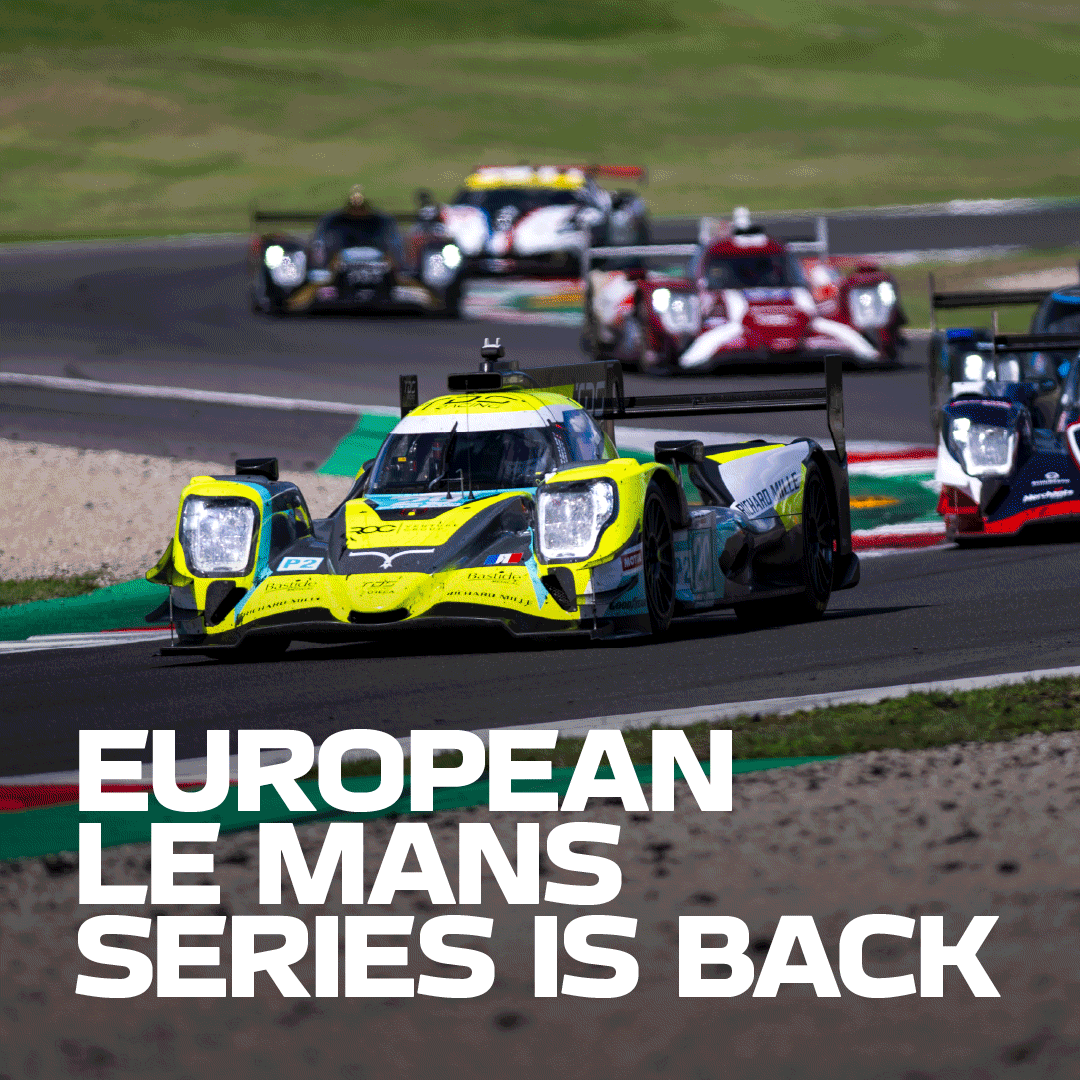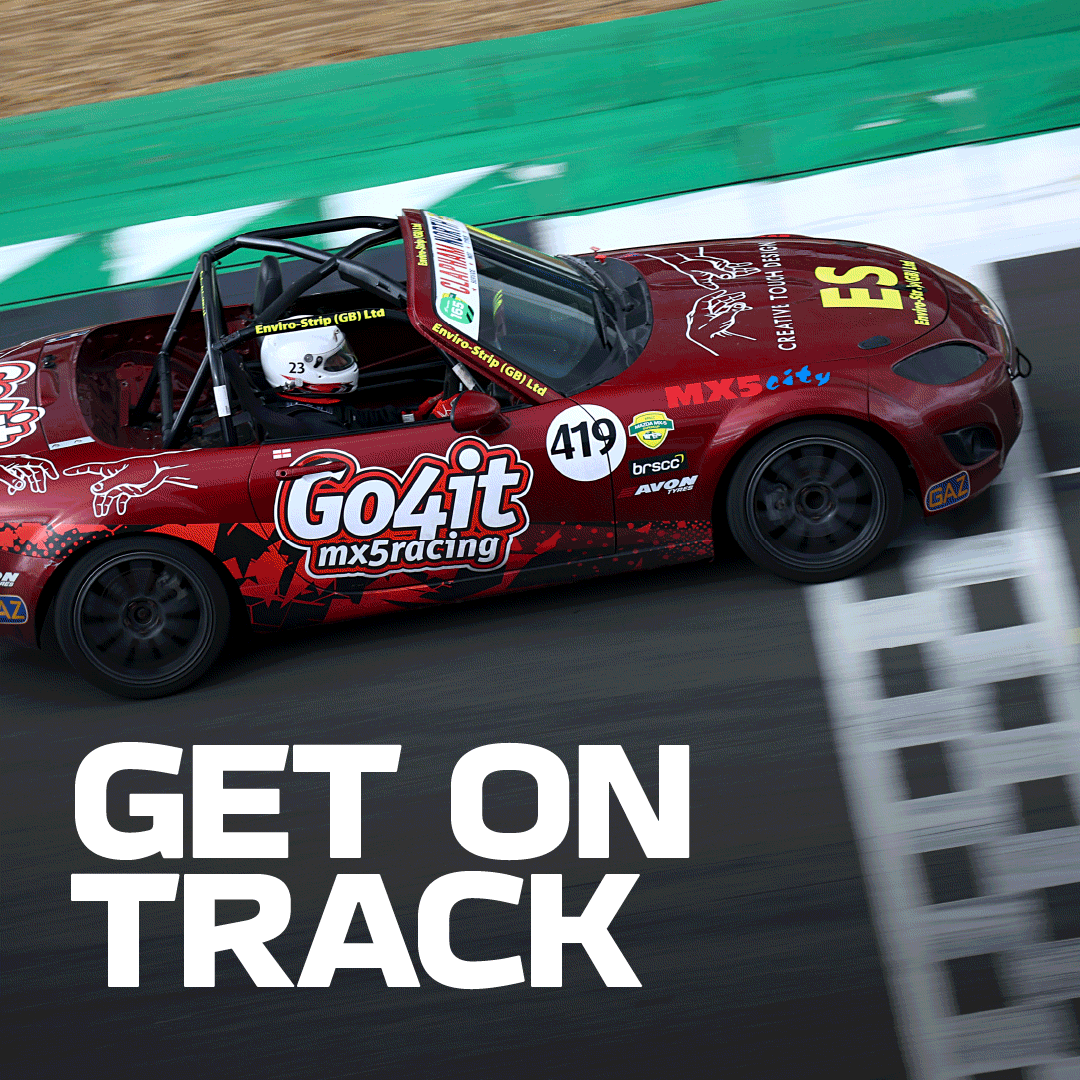
Patrick Harding on working with F1 driver Alex Albon as his Performance Coach
23 August 2024Patrick Harding's career so far has spanned across a number of sports, from boxing to to gold, football to motorsport. Currently, he's working in Formula 1 with Alex Albon as the Thai driver's performance coach, and travels the world alongside Alex to ensure he is performing at the absolute peak on a Grand Prix weekend.
Silverstone caught up with Patrick to learn more about his journey to Formula 1, exploring his initial exposure to elite sport, his educational career and making his break into the sporting world, before reaching the pinnacle of global motorsport with one of the best racing drivers around.
Having grown up in a sport-oriented family, with his dad working as a coach, it was always very natural for Patrick to be involved within a sport environment. From a young age, and growing up with two older brothers, Patrick knew he wanted to be involved in sport. He also knew that he wasn't going to be somebody who worked in an office all day, so spoke to his career guidance teacher at school and an opportunity to study physiotherapy arose. It was the perfect opportunity for Patrick to begin carving out a career in professional sport.
"When you start to think about what it is you want to do with your future, the second option to being a professional athlete myself was working with professional athletes," Patrick says. "It was probably a mixture of having the passion and the exposure to it in my environment as a kid but also the desire from me to be able to create that career for myself was how I ended up going down this route."
While Patrick knew he wanted to work in sport and began working hard to achieve his dream, he didn't want to close any potential doors for himself in sports he might not have necessarily considered, nor did he want to stop learning. He's always made it his mission to continue developing and addressing gaps in his knowledge so he can become a better coach to the athletes he works with.
"The nature of my character is that no matter what I'm doing, I want to do the best job I possibly can," he explains. "That has opened up doors and opportunities in different sports, sports that I would have never considered previously.
"For me, it's not necessarily about the sport, but it's about the opportunity to learn, grow, and be exposed to different types of athletes who have not only different physical demands but different personality characteristics, too."
Throughout his career so far, and in a variety of different sports, Patrick has worked closely with support staff in sport psychology, sport science and nutrition, technical coaches, and strength and conditioning coaches. Being exposed to individuals has allowed him to develop his skills to interact with and support athletes in any given sport.
In his younger years, the three sports Patrick was most interested in were Gaelic football, football, and boxing. During his career already, Patrick worked with athletes in all these sports, including Arsenal FC and still with professional boxers alongside what he does now in motorsport.
"I was naturally drawn to those sports because I'd been exposed to them already," he says. "I've never said to myself, 'I want to work in that particular sport' because for me, it closes my perspective on other opportunities that might pop up in your periphery and that's exactly how I ended up here.
"I'm not going to lie, I never considered working in Formula 1."
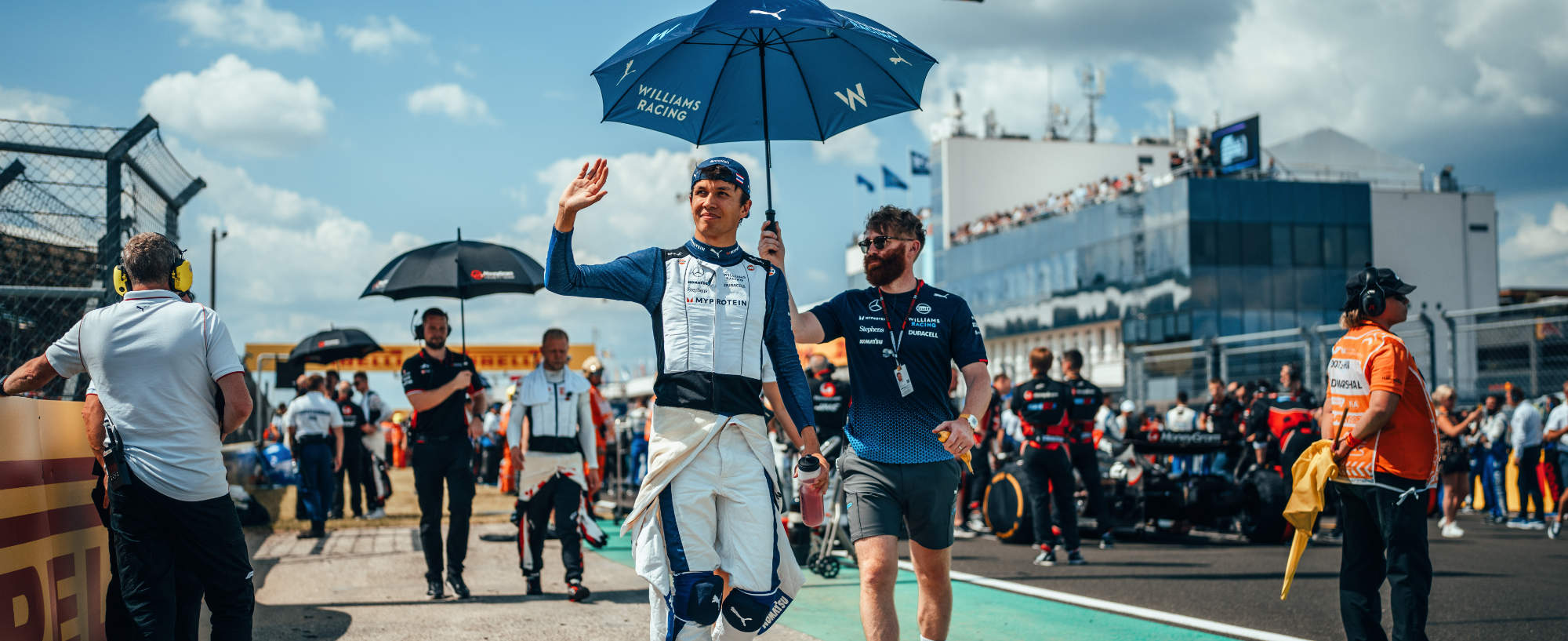
Patrick's career started at University, where he studied his Undergraduate degree in Physiotherapy, then began working as a chartered physiotherapist. Predominantly, he was there to support the rehabilitation from, and to prevent, injury. As Patrick developed in his role, particularly when he was working with Team GB, he realised that he had a strong interest in strength and conditioning, so pursued a Postgraduate degree in the subject.
"I was in the programme going to the Olympic Games, working with strength and conditioning coaches, and I was there to help protect the athletes in terms of their physical capacity, but I needed the knowledge base to be able to go to coaches and the credibility to have conversations about how these programmes were impacting their athletes," Patrick says. "It not only informed my knowledge base in terms of conversations, but my knowledge base in terms of how I supported my athletes."
Patrick then worked at Arsenal Football Club as a Physiotherapist with multiple players from the team. It was during this time that he started getting approached by more individual athletes: Irish boxer Michael Conlan and golfer Paul Dunne.
"I started to really enjoy working with individuals and the level of detail you could get to, I wasn't trying to keep players on the pitch or managing 30 players across a team of support staff," he explains. "I was working with one individual and we were going, 'what are the best people in the world doing in your sport and where are you at right now? Let's put the pathway and strategy in place to get you from where you are to where you could be.'
"That's the bit that really started to excite me."
Constantly looking at the gaps in his skillset, Patrick used what his athletes needed to better himself as a coach and every time he did that, he made a step in his career. Now, he's in the middle of a PhD, working with the Williams Driver Academy as Performance Lead to look at young athlete development.
After Patrick completed his Postgraduate degree, the head of the UK Strength and Conditioning Association had shared a post to Twitter, now X, saying he was looking for physios in elite sport who have Strength and Conditioning qualifications. Patrick was recommended by his lecturers from university, and was soon interviewing for a role with Hinsta Performance.
"He said they supply coaching to drivers in motorsport and they would really love to put me with one of their drivers," he says. "I had no experience with motorsport but I was very keen to try a different environment."
He was offered a job in Formula 1 but couldn't commit to it at the same time since he was still working with his boxer and golfer, but Hinsta came back to him a short time later. They had a driver in Formula 2 needing a coach and it would be half the time commitment.
"The driver was Tadasuke Makino and I had a really good season with him, then he went back to Japan to compete in Super GT and Super Formula," Patrick says. "That was the year Alex was in Formula 2, fighting for the championship with George Russell and Lando Norris.
"I got to know Alex a little bit throughout that season, and obviously that was the year he got the call to go to Toro Rosso."
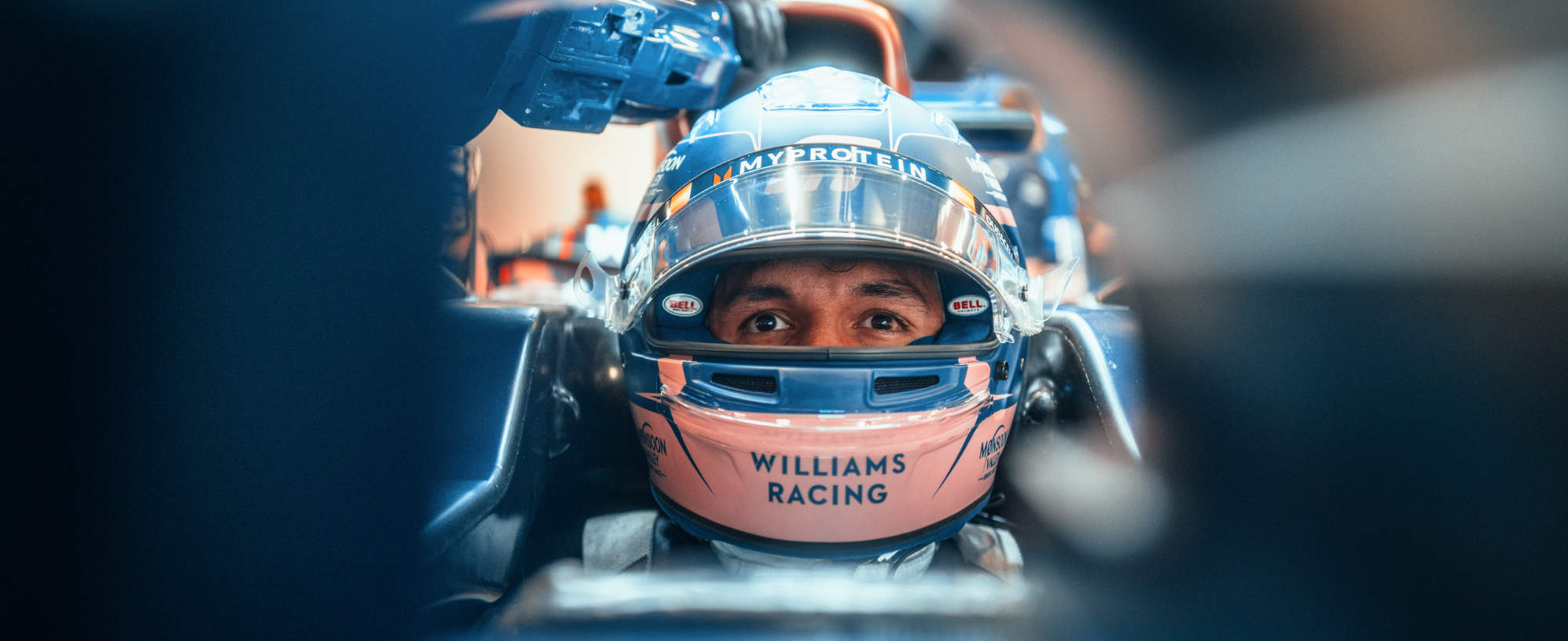
At the time, Alex didn't have a coach, and he knew Patrick was available and still interested in working in motorsport, so they had a conversation about philosophy, how they like to work and how they treat people, and everything fell into place.
"We started working together and here we are, seven seasons later," Patrick says. "Over these years, we have created a structure that puts Alex in the best place possible, so that when he gets in the car for Qualifying or the race, he's in the best position possible to be able to compete.
"That's both mental and physical, sleep, nutrition and travel... all aspects of performance."
During Alex's time so far in F1, he has moved from Toro Rosso to Red Bull to Williams and Patrick's job, when moving to new teams, is to build and recreate the structure he and Alex have built to ensure he is performing at his best, no matter where they are. That involves developing relationships with the key people within the team so they can have open conversations about what they need to recreate at each race weekend, what they need to warm up, the nutritional needs and travel schedule.
"How we prepare and how we run our race weekend is very consistent across all of those teams because how we like to operate is very similar," Patrick says. "We like consistency, and once we have that, we're ready for all the other things that pop up unexpectedly.
"We know Alex performs best when he's relaxed, has enough time with his engineers but has enough space away from that himself, sleeps well, eats well, and then we're ready to go on Sunday once we've created that space. When we move team, for me, it's about creating that so Alex is in the best place possible for the weekend."
A race weekend for Patrick and Alex has the same schedule at each Grand Prix. The only thing that differs is if it's a flyaway race, they'll travel on Monday or Tuesday but if it's a European race, they'll travel on Wednesday. Their Wednesday will be rather chilled, with a training session, then get on track on Thursday, which is a mix between Alex in engineering and media and PR, so it's all about creating a balance that works for him.
"We will generally run the track on Thursday so he gets a feel for it, and he likes to do that," Patrick explains. "Then it's all about making sure he's eating and hydrating well across the weekend, making sure we're getting back to the hotel at a reasonable time to chill out and get some good sleep."
Friday sees the track action start, so it's a bit more focused on performance. The rest of the weekend then follows this structure.
"Sleep, nutrition, preparation, exposure to the environment and then space away from the environment, we are consistent with that across the race weekend so that we know when Alex needs a break," Patrick says. "Then in the morning, we check his body weight, his urine for hydration, and we're good to go. It sounds boring but we thrive on that consistency."
Maintaining the structure on race weekends means Alex has less to think about when it comes to the basics, it all just happens. Alex can just focus on his racing, with all the mental energy and headspace to do that to the best of his ability.
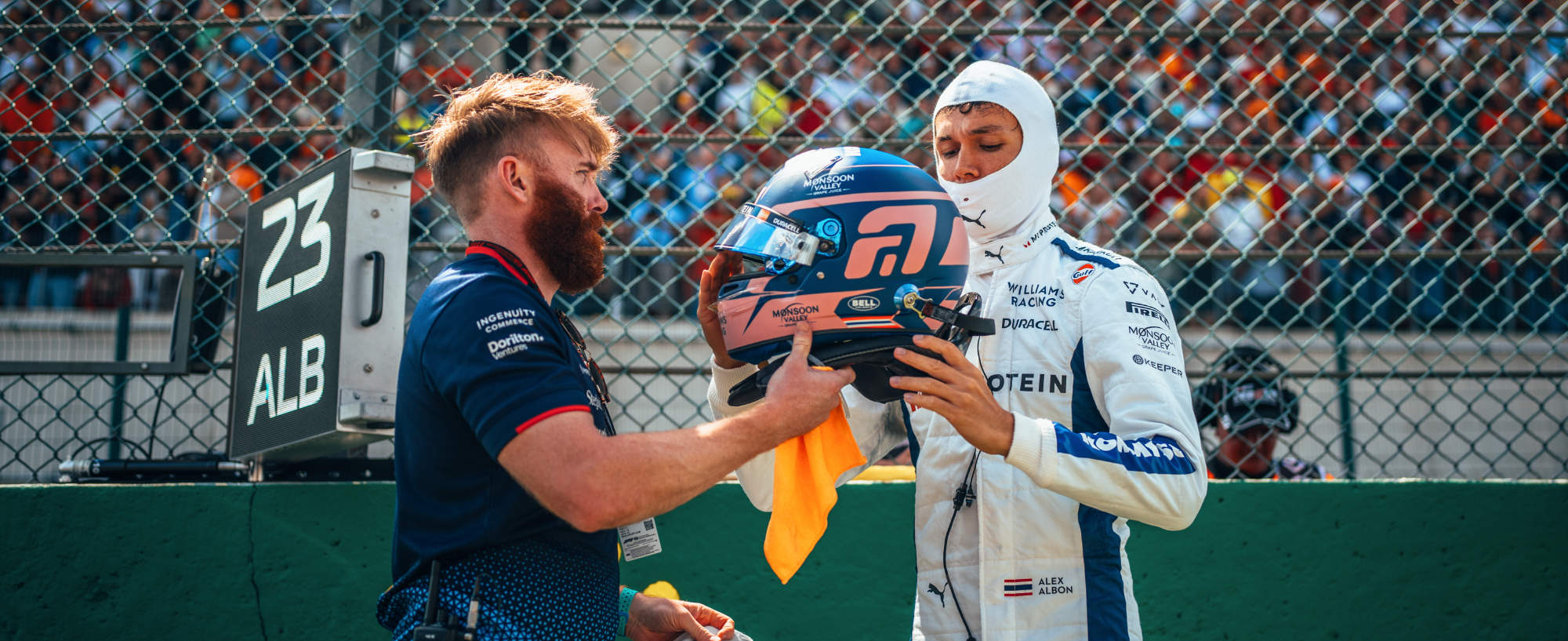
Fundamentally, the reason that the relationship between Patrick and Alex is so strong and getting stronger is because they both have similar core values as people. From this perspective, for Patrick, he is able to have open and honest conversations with his driver, and Alex is able to have these conversations with Patrick, too.
"All of those values are built around truth, honesty, integrity, and respect," Patrick says. "When you see Alex on camera or when you see him on interviews, he's so natural and he's so honest, that is how he is in front, and behind of, the camera.
"Working with somebody in that space is really refreshing because you can be truthful and honest in terms of your feedback, but you can also expect that from him as well and I like that."
Patrick has been working with Alex for the entirety of his Formula 1 career so far and together, they've been through a lot professionally, but also on a personal level. Patrick has been there for Alex's ups and downs in the same way as Alex has been there for his.
"Honestly, would I have ever thought I'd have spent seven years of my life working in motorsport? Absolutely not," Patrick says. "The only reason I'm still here is because of my relationship with Alex.
"I believe in what he's capable of and actually, the scary thing about Alex is he's not even close to his potential yet."
As well as having a close relationship with Alex, Patrick also works closely with other members of the Williams team, as well as maintaining friendships with other driver performance coaches across the grid. Within Williams, there are multiple relationships Patrick has needed to build and maintain to ensure he can provide everything Alex needs.
"I've been not only involved with Alex, but involved with the driver academy this year to help support them in developing a performance structure to support the young drivers," he explains. "I came in initially as somebody who was attached to Alex, but I've developed a good relationship with the team and been able to support them in other areas.
"Williams is a team in transition and I see the team going in a good direction, and it's an exciting project to be part of."
Considering Patrick has been working with Alex for the duration of his F1 career so far, he has attended Silverstone on a number of occasions to work at the British Grand Prix. He recalls one of the nicest moments he's ever had with Alex happening at Silverstone, during his first year at Toro Rosso, and his first British Grand Prix as an F1 driver.
Alex's pace had been good in practice, and the pair were chatting together ahead of Qualifying. They never chat about results, but Patrick recalls telling Alex his pace looked good, and when he asked Alex how he was feeling, he said, "if I deliver the lap of my life, I think we can get P7.
"We were laughing about it, but Alex gets into Q3, puts in a lap and he's P7," Patrick says. "Then, literally, Lando goes over the line at the end of the session and he's pushed Alex into P8. They went to the FIA garage to get weighed and we met out the back, and it was just this really lovely moment of us both just catching each other's eye and recognising the conversations we had before.
"For him to have taken something as unrealistic expectation but to have the capability to do that, there was a realisation moment that you have the capability to deliver what you think you could; there are really strong moments, not just for our relationship but mainly for Alex's development, and him realising how good he is."
Image Credit: Patrick Harding

